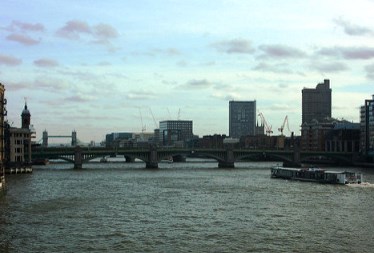European codes of practice
European codes of practice for civil engineering structures
 Research led by two members of the University of Warwick's School of Engineering strongly influenced the planning, drafting and technical content of nearly all of Eurocode 4, one of ten European civil engineering standards. Eurocode 4 covers composite structures made of steel and concrete. Since 2010 this standard has been in force in all countries of the European Union (EU) and the European Free Trade Area (EFTA). The Eurocodes are the only set of design rules for publicly-funded structures on land that satisfy national building regulations throughout the EU and EFTA. Their impact on structural engineering is wide-ranging and growing, the principles and methodology contained within these Eurocode 4 will be the basis of engineering design teaching for Chartered Engineers throughout the EU.
Research led by two members of the University of Warwick's School of Engineering strongly influenced the planning, drafting and technical content of nearly all of Eurocode 4, one of ten European civil engineering standards. Eurocode 4 covers composite structures made of steel and concrete. Since 2010 this standard has been in force in all countries of the European Union (EU) and the European Free Trade Area (EFTA). The Eurocodes are the only set of design rules for publicly-funded structures on land that satisfy national building regulations throughout the EU and EFTA. Their impact on structural engineering is wide-ranging and growing, the principles and methodology contained within these Eurocode 4 will be the basis of engineering design teaching for Chartered Engineers throughout the EU.
The rules of the EU and EFTA require that barriers to trade among member countries are removed, so it was necessary for the European Commission (EC) to generate a set of principles and rules for the design and construction of composite steel and concrete structures that would be accepted by each country and would satisfy their diverse national standards. To achieve this, research was needed to resolve differences in the meanings of units, symbols and so on and in the legal status of standards between nations. The new standards (Eurocodes) were based on the best available scientific evidence with uniform and consistent margins of safety and are designed to protect workers and the public and to save construction costs.
In 1972, Professor Roger Johnson of Warwick's School of Engineering was invited to work on the new EU standards, initially as a member of the European Joint Committee for Composite Structures. He chaired the Composite Structures Sub-committee of CEN, the European Committee of Standardisation (1990-99), and led the project teams that prepared the relevant preliminary codes, ENV 1994-1-1 (1983-93) and ENV 1994-1-2 (1993-97) and also that for EN 1994-2 (Bridges, 1999-2005). His colleague, Professor David Anderson, led the EU project team that completed EN 1994-1-1 (Buildings, 1993-2004). Both are now Emeritus Professors at Warwick (Johnson, 1998, Anderson, 2003).
The rules of Eurocode 4 were strongly influenced by research led by Johnson and Anderson. As conveners of the EU project teams they were actively engaged in all the technical aspects. This involved studying competing methods for design of composite structures (typically based on current national practice), calculations for evaluation and calibration, devising compromises and making proposals (often based on their own published research) that were adopted. The research was funded by various stakeholders (examples in Section 3). Their publications (examples in Section 3) had international impact and include the following:
| Ductility is required in composite joints to enable redistribution of moment which may be provided through yielding of the slab reinforcement and slip of the shear connection. As the reinforcement may eventually fracture, a calculation method is needed to determine the rotation corresponding to this failure mode. This research developed such a method and comparisons with test results show good agreement. The proposed model can also be used to predict rotation capacity limited by slip due to partial shear connection. |
| Methods for analysis and design for distortional lateral buckling of beams, shear connection and bending resistance in composite slabs [3], partial shear connection in beams, tension stiffening in cracked concrete, and interaction between bending and shear in beams;the resistance to longitudinal shear by stud shear connectors depends on over 20 parameters. This research developed improved methods of testing and provided validated mechanical models of stud shear connectors; statistical analyses of results. |
|
How to use the English language with a precision that was accepted by experts in all countries involved, and could be widely translated without ambiguity: shear connectors and transverse shear in composite beams and slabs; connections in composite frames; redistribution of moments in continuous composite beams;vertical shear in composite beams; and biaxial bending of composite columns. |
Publications
1. Johnson R.P., "Calibration of resistance of stud shear connectors in troughs of profiled sheeting". Proc. Instn Civ. Engrs, Struct. and Bldgs, 161(3) 117-126. (2008) DOI: 10.1680/stbu.2008.161.3.117
2. Anderson, D., Aribert, J.-M., Bode, H. and Kronenberger, H.-J., "Design rotation capacity of composite joints", The Structural Engineer 78(6) 25-29. (2000) http://www.istructe.org/webtest/files/f9/f9021aa8-b08b-4bbf-93b4-c5289a2c1a33.pdf
3. Johnson, R.P., "Prediction of shear resistance of headed studs in troughs of profiled sheeting". In Composite Construction in Steel and Concrete VI, ed. R.T. Leon et al, 1-13, Amer. Soc. Civ. Engrs, New York. (2011) DOI: 10.1061/41142(396)1
4. Johnson R.P., "Control of cracking in composite bridge decks in regions of biaxial tension". Stahlbau, 80(12) 880-884. (2011) DOI: 10.1002/stab.201101497
5. Johnson R.P., "Eurocodes, 1970-2010: why 40 years?", Proc. Instn Civ. Engrs, Struct. and Bldgs 162(6) 371-9. (2009) DOI: 10.1680/stbu.2009.162.6.371
6. Hendy C.R. and Johnson R.P., "Designers' Guide to EN 1994-2: Design of composite steel and concrete structures; General rules and rules for bridges", pp. x, 206. Thomas Telford. (2006) ISBN: 9780727731616
7. Johnson, R.P., "Designers' Guide to EN 1994-1-1: Design of composite steel and concrete structures; General rules and rules for buildings", 2nd ed., pp. xiii, 256. Thomas Telford, London. (2012) ISBN: 9780727731517
